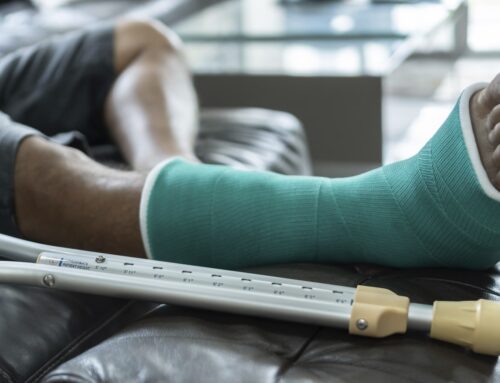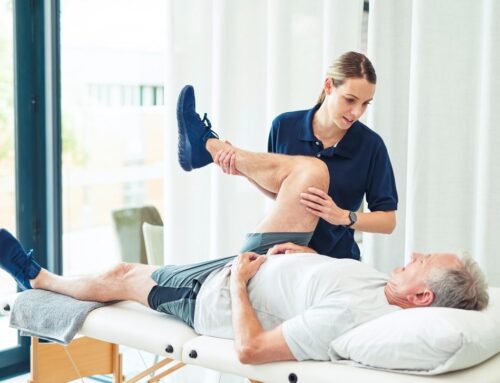Low back pain affects millions of people in the US and can significantly impact daily activities. Physical therapy interventions for low back pain offer proven solutions to reduce pain and restore function. These evidence-based treatments help patients avoid surgery and return to their normal activities safely.
Physical therapists use various techniques to address the root causes of back pain. From manual therapy to specific exercises, these interventions target muscle imbalances, joint restrictions, and movement patterns.
In this article, we will explore physical therapy interventions for low back pain, so you can make informed decisions about your care.
Manual Therapy Techniques
Manual therapy forms the foundation of many successful treatment plans. Physical therapists use their hands to manipulate soft tissues and joints. This approach reduces pain and improves mobility in the lower back.
Spinal Manipulation
Spinal manipulation involves high-velocity, low-amplitude thrusts to specific vertebral segments. This technique helps restore normal joint movement and reduces muscle tension. Many patients experience immediate pain relief after treatment.
Soft Tissue Mobilization
Soft tissue mobilization targets muscles, fascia, and ligaments around the spine. Therapists apply pressure and stretching techniques to release tight areas. This intervention improves blood flow and reduces inflammation in affected tissues.
The technique includes trigger point release, myofascial release, and deep tissue massage. These methods help break up scar tissue and restore normal muscle function.
Exercise-Based Interventions
Exercise therapy remains one of the most effective physical therapy interventions for low back pain. Specific exercises target weak muscles and improve flexibility in tight areas.
Strengthening Exercises
Core strengthening exercises focus on deep abdominal muscles, back extensors, and hip muscles. These muscles provide stability to the lumbar spine during movement. Stronger muscles reduce stress on spinal structures.
Common strengthening exercises include:
- Dead bugs
- Bird dogs
- Planks and side planks
- Bridges
- Modified squats
Flexibility and Stretching
Stretching exercises address tight hip flexors, hamstrings, and back muscles. Limited flexibility in these areas increases stress on the lower back. Regular stretching improves range of motion and reduces pain.
Movement Re-Education
Movement re-education teaches patients proper body mechanics during daily activities. Poor movement patterns often contribute to recurring back pain episodes. Physical therapists analyze how patients move and identify problematic patterns.
Postural Training
Postural training addresses alignment issues that stress the spine. Many people develop forward head posture and rounded shoulders from prolonged sitting. These positions increase pressure on lower back structures.
Therapists teach patients how to maintain neutral spine alignment during sitting, standing, and walking. Proper posture reduces muscle fatigue and joint stress throughout the day.
Functional Movement Training
Functional movement training focuses on activities patients perform regularly. This includes lifting, bending, reaching, and carrying objects. Therapists teach safe techniques to prevent re-injury.
The training emphasizes proper lifting mechanics, such as bending at the knees and keeping the back straight. Patients practice these movements repeatedly until they become automatic.
Pain Management Techniques
Physical therapists use various modalities to manage pain and promote healing. These interventions complement exercise and manual therapy approaches.
Heat and Cold Therapy
Heat therapy increases blood flow and relaxes muscles before exercise sessions. Cold therapy reduces inflammation and numbs pain after activities. Therapists determine the appropriate timing and duration for each modality.
Electrical Stimulation
Transcutaneous electrical nerve stimulation (TENS) blocks pain signals to the brain. Small electrical pulses stimulate nerves and reduce pain perception. Many patients find this technique helpful for managing chronic symptoms.
Patient Education and Self-Management
Education empowers patients to manage their condition independently. Physical therapists teach patients about their specific condition and contributing factors. This knowledge helps prevent future episodes of back pain.
Activity Modification
Therapists help patients identify activities that worsen their symptoms. They provide alternatives and modifications to reduce stress on the spine. This includes ergonomic recommendations for work and home environments.
Home Exercise Programs
Home exercise programs ensure patients continue their rehabilitation between therapy sessions. Therapists design personalized programs based on individual needs and limitations. Consistent exercise at home accelerates recovery and prevents recurrence.
When to Seek Professional Help
Not all back pain requires immediate medical attention. However, certain symptoms indicate the need for professional evaluation. These include severe pain that worsens over time, numbness or tingling in the legs, and weakness in the lower extremities.
Physical therapy interventions for low back pain work best when started early. Chronic pain becomes more difficult to treat as time passes. Early intervention prevents the development of compensatory movement patterns and muscle imbalances.
Physical Therapy Interventions for Low Back Pain in Cary, Holly Springs, and Morrisville, NC
Physical therapy interventions for low back pain offer safe and effective treatment options. These evidence-based approaches address the underlying causes of pain rather than just masking symptoms.
At Cary Orthopaedics, our physical therapy team provides individualized treatment plans for patients with low back pain. Our bio-mechanical and neuromuscular evaluations identify the best interventions to relieve your pain and restore function. We focus on preventing recurrence while helping you regain strength and mobility.
Contact Cary Orthopaedics today at (919) 573-4825 to schedule your evaluation and begin your path to recovery. For more information about us or our team, contact us at (919) 467-4992. Our orthopedic physicians, Dr. Adam Almaguer and Dr. Paul Andrews, are accepting new patients.






